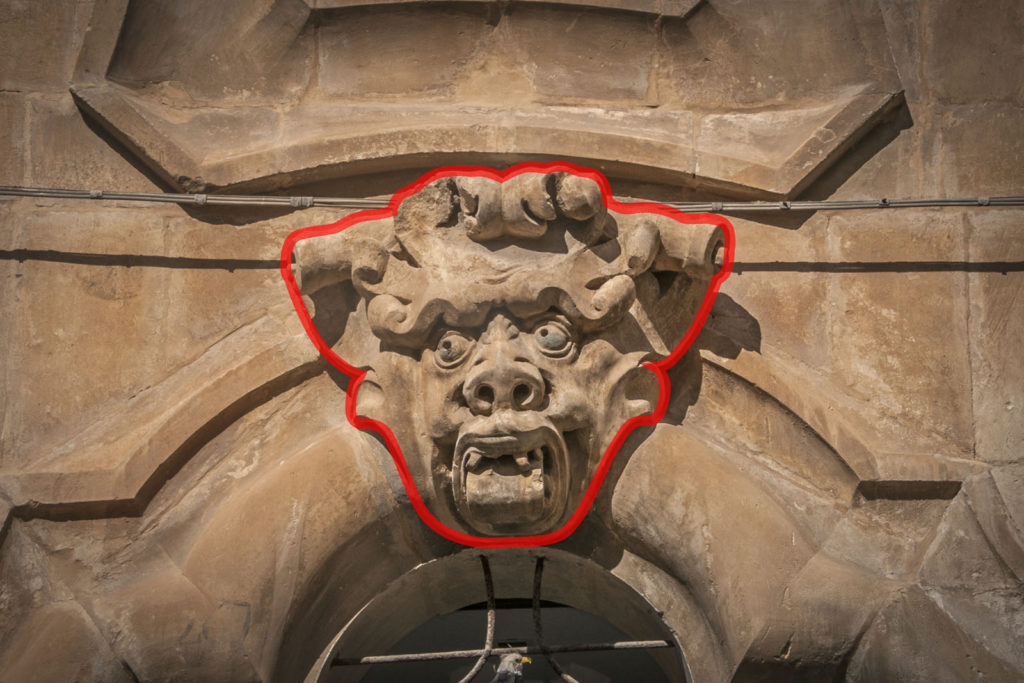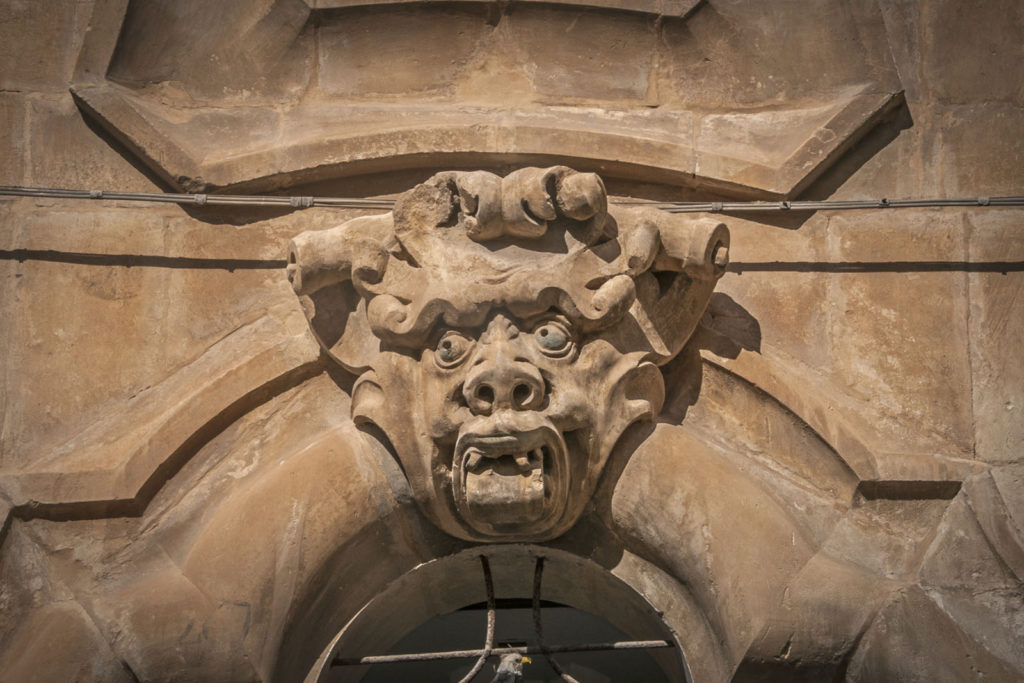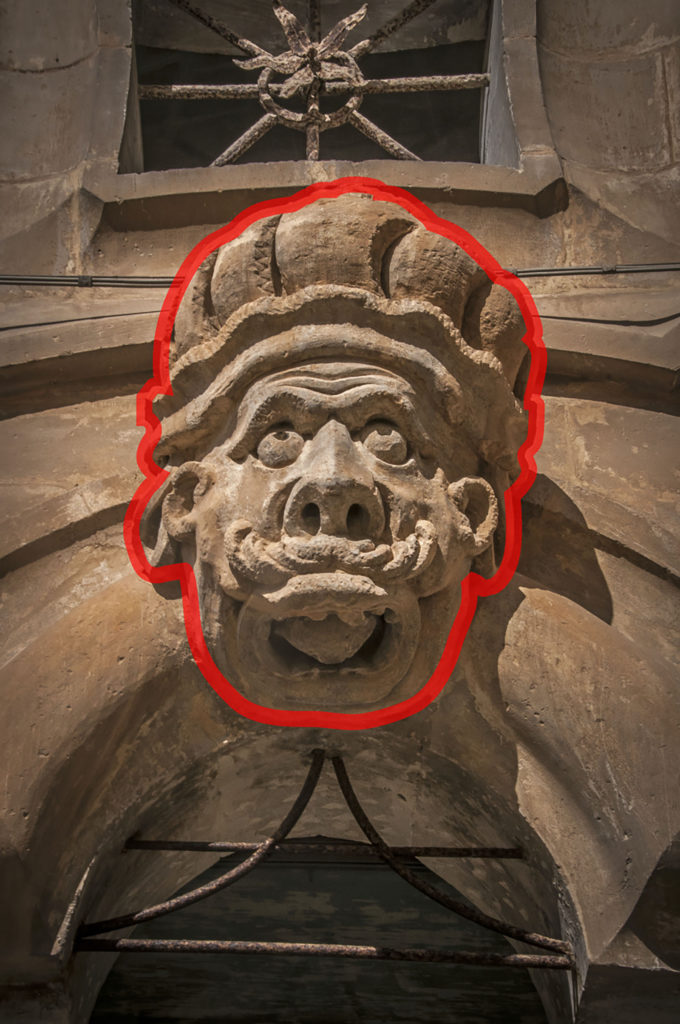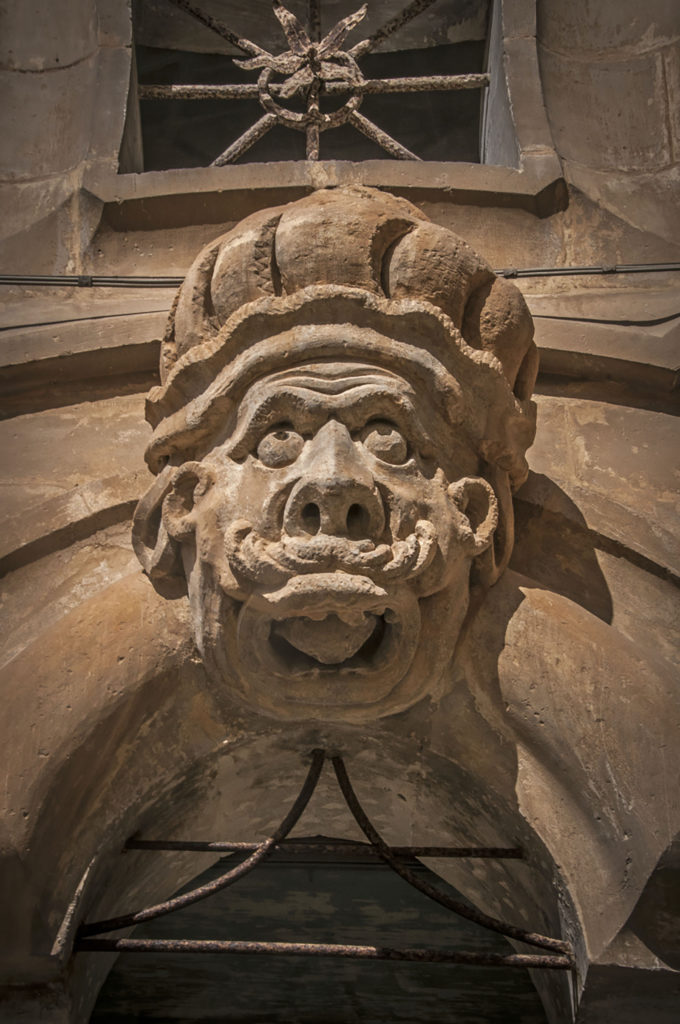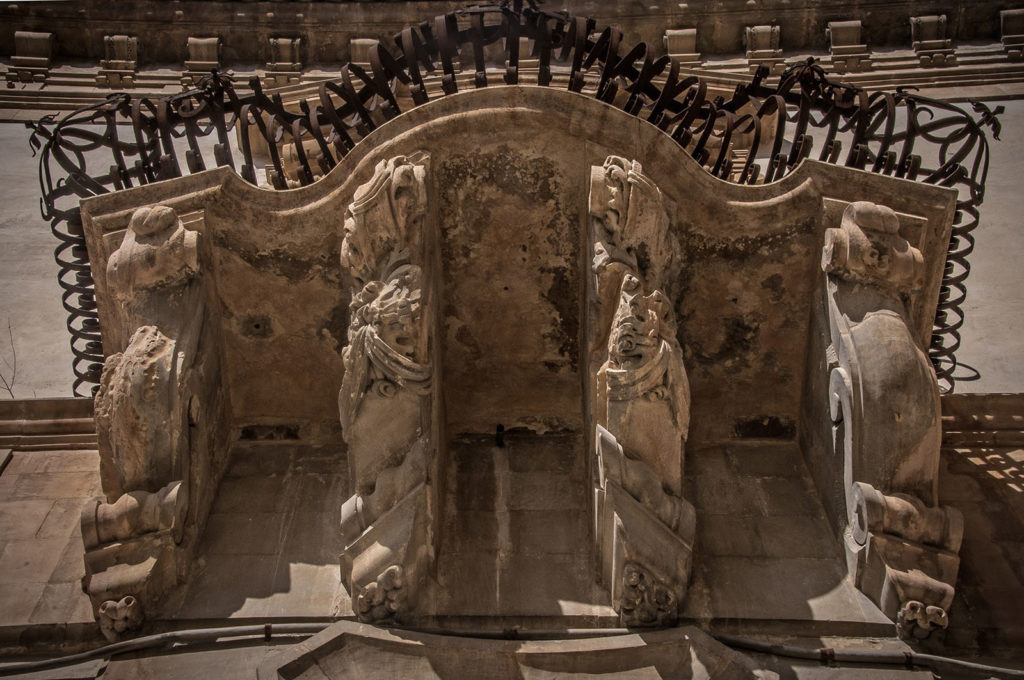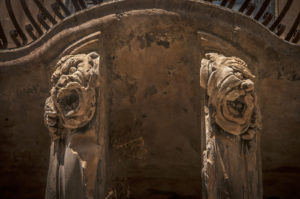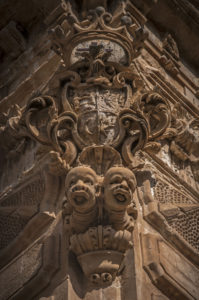Described as the most beautiful Baroque palace in Sicily, the Palazzo dei Due Mori dates back to the 18th century, after it was rebuilt on the slopes of the San Matteo hill following the earthquake of 1693. The building’s entire external surface is characterised by a soft colour that contrasts with the dark wrought iron railings of the scenic balconies.
These predominant elements give the building a light and elegant appearance.
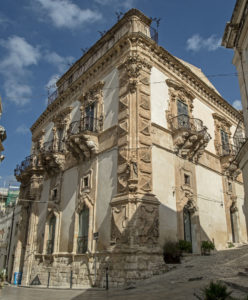
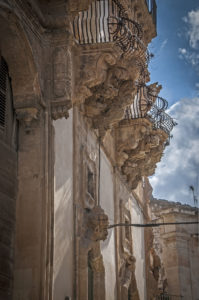
The base of the building, placed on a slope with respect to the two streets that flank it, is outlined by the stone base. All the decorative elements of the façade such as the pilaster strips, window frames and iconic balconies, are also made of stone.
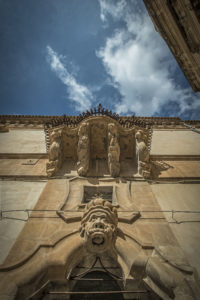
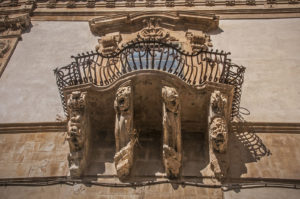
One element that made this building famous are the corbels that support the swollen balconies with wrought iron railings. In fact, the balconies depict animal and anthropomorphic figures that tell the story of the raids of the Saracens and Mediterranean pirates.
